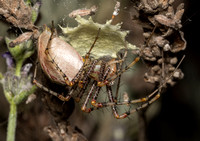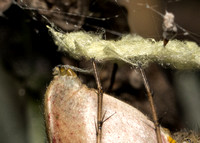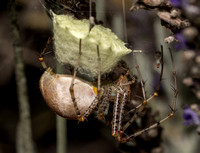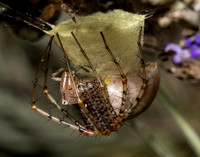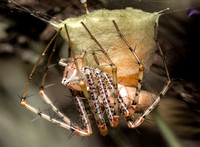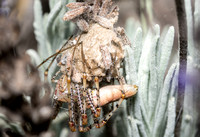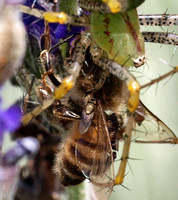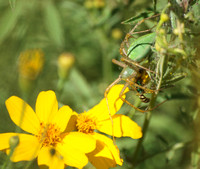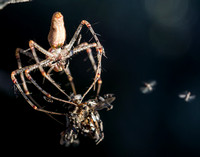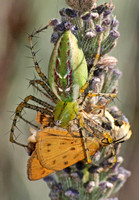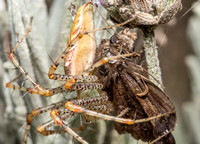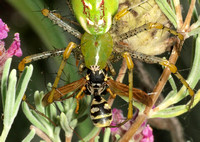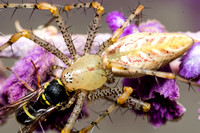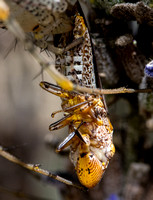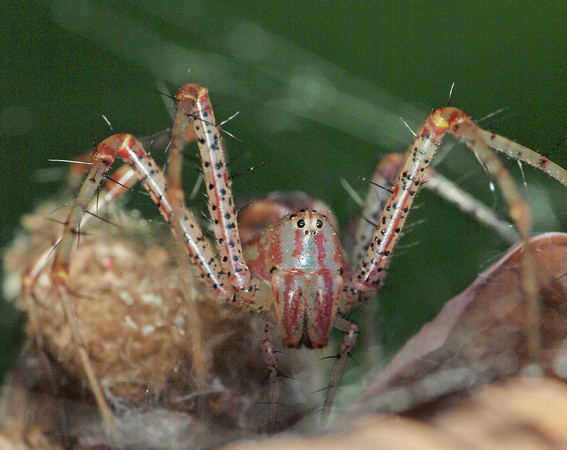The Missing "Lynx"
 MaleGreen Lynx
MaleGreen Lynx
The more you closely observe something, the more fascinating it becomes, or at least that's the way it is for me, particularly with nature.
I first noticed Green Lynx spiders several years ago on my lavender and the other shrubby drought tolerant plants in my garden. Each fall I would see them and occasionally saw them with their egg sacs, but by summer they were gone (or so it appeared). Rarely did I see a male. I just wasn't observing closely. Since then, I have been fascinated by them and have been photographing them whenever I get a chance.
I have come to appreciate the many color variations and patterns on these beautiful spiders. I saw my first spiky green spider and wondered what it was. I found out it was a Green Lynx spider. Soon after, I saw a reddish spider and a yellowish spider. They were also spiky and I wondered what they were. Of course I found out they are the same species.
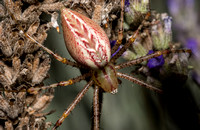 
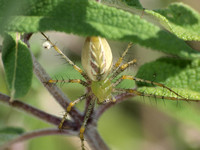 
|
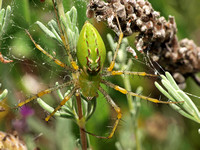 
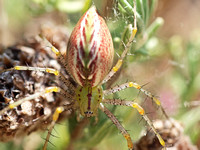 
|
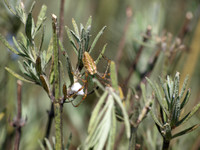 
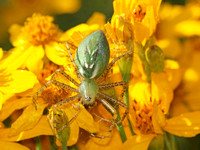 
|
I have watched several spiders weave their egg sacs over a period of about an hour. I watched one fill it with orange eggs. The mother's body changed shape from round and fat to skinny. Initially the sac was a pale yellow-green; then it dried to a brown color and was camouflaged with bits of the lavender. The mother stays near the egg sac and vigorously defends it.
She ventures a short way to actively hunt or lay-in-wait for prey. One often thinks of spiders catching flies in a web, but this species doesn't build webs to catch prey; Honey Bees seem to be the most common visitors, and so they are the most common meal followed by Fiery Skippers. Wasps, large flies, other butterflies, and an assortment of bugs are on their menu. Freeloader Flies quickly come to dine on the spider's dead or dying prey and annoy the spider to no end. They cover a Honey Bee and even land on the spider. The spider will flick them away with her legs.
It may be a month or more before the egg sacs open. The mother will make a mesh of web often tying branches into a cluster in order to make a safe haven for the spiderlings. While this spider usually has one brood a season, some may have multiple broods, and as soon as one sac opens, she makes another one in the same spot. I have observed up to three broods. The eggs hatch inside the sac after about two weeks, but stay inside for another couple of weeks although I have not observed what happens in the egg sac. The mother helps open the egg sac to release the spiderlings.
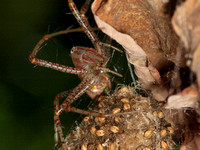 
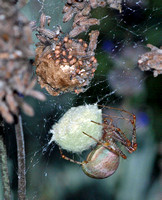 One brood is done ,now creating another egg sac One brood is done ,now creating another egg sac
|
 
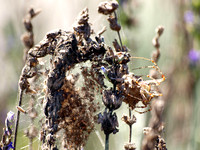 multiple broods multiple broods
|
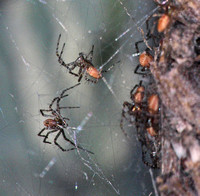 
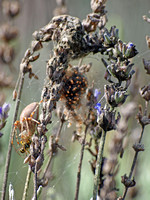 Weaving together a safe place for the spiderlings Weaving together a safe place for the spiderlings
|
The spiderlings will molt multiple times over the course of their lives.
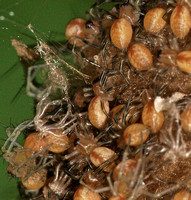 
|
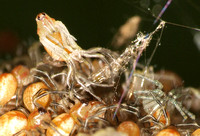 Molting Molting
|
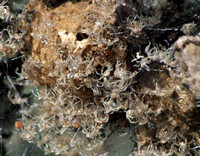 Molted exoskeletons Molted exoskeletons 
|
The babies spread through my garden and dine on tiny insects such as carpet beetles, small caterpillars, and nymphs of other insects. I enjoy finding the baby spiders throughout the spring, but then they seem to disappear or maybe I'm just not looking for them.
 Baby Green lynx spider Baby Green lynx spider
|
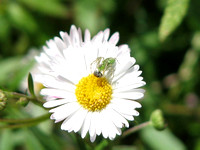 Eating a carpet beetle Eating a carpet beetle
|
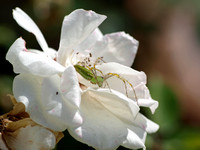 Still growing Still growing
|
It's not until the next fall that I start to see a few adult females starting the cycle anew. I love their patterns and colors and their expressive faces. They have become one of my favorite garden visitors.
